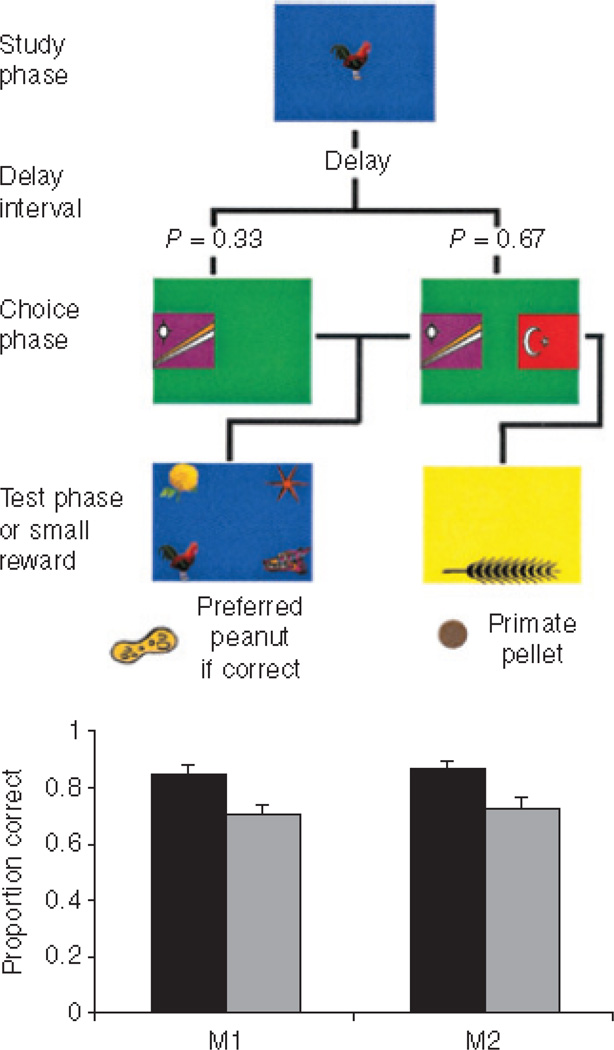Figure 9.
The metamemory task of Hampton139. The top panel outlines the procedure. Each colored panel represents what monkeys saw on a touch-sensitive computer monitor at a given stage in a trial. At the start of each trial, monkeys studied a randomly selected image. A delay period followed over which monkeys often forgot the studied image. In two-thirds of trials, animals chose between taking a memory test (Right, left-hand stimulus) and declining the test (Right, right-hand stimulus). In one-third of trials, monkeys were forced to take the test (Left). Better accuracy on chosen than on forced tests indicates that monkeys know when they remember and decline tests when they have forgotten, if given the option. The bottom panel shows the results. Dark bars represent accuracy on tests the monkeys chose to take. Light bars represent performance on trials where the animals were not given the choice of declining tests. Monkeys were more accurate on tests they chose to take than those they were forced to take. From “Rhesus monkeys know when they remember,” by RR Hampton, Proceedings of the National Academy of Sciences, 98: 5359–5362. Copyright 2001 by HighWire Press. Reprinted with permission.

